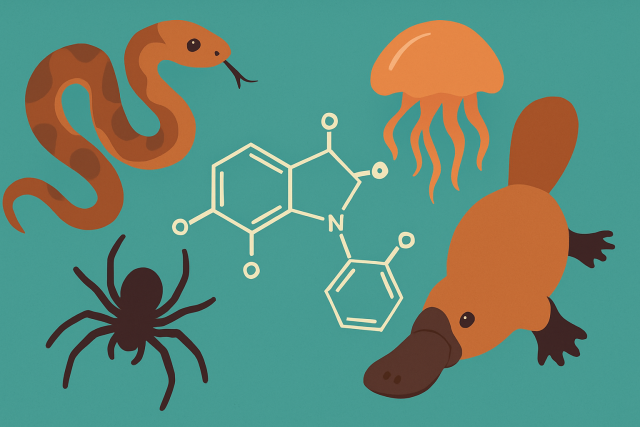
Why Do People Hate PETA And What Drives The Criticism?


People for the Ethical Treatment of Animals (PETA) stands tall as one of the most recognizable animal rights groups across the globe. They tirelessly work to put an end to cruelty against animals. While their mission earns respect, PETA never fails to stir the pot and draws a mix of devoted fans and vocal critics because of their bold tactics and provocative messaging.
This article digs into why so many individuals seem to hold pretty strong negative feelings toward PETA, lays out the common criticisms they often face
Who PETA Is and What They Stand For
Founded in 1980, PETA is dedicated to championing animal rights and ending animal abuse for good. The organization does not just talk about change. It runs tireless campaigns to stop cruelty to animals in many industries. From eye-catching protests to carefully designed educational programs and smart media advocacy, PETA works continuously to influence public opinion and push policy forward.
PETA has a firm stance against what they see as exploitative or outright abusive practices. This covers a wide range of issues from using animals in fashion like fur and leather to the realities of factory farming for food. Animals are then put on display for our amusement in circuses or marine parks and of course in controversial scientific research testing.
Common Complaints and the Reasons Why Some People Just Are not Fans of PETA
Although PETA is undeniably a passionate advocate for animal rights, it frequently finds itself in the hot seat.
They often lean on provocative and shocking campaigns to grab attention—tactics that rub some individuals the wrong way and come off as offensive or insensitive.
There have been whispers and accusations of hypocrisy, especially regarding their stance on euthanasia in animal shelters—an issue that stirs strong feelings.
Their public image tends to skew toward the extreme, which can alienate more middle-of-the-road supporters who might otherwise be on board.
They constantly find themselves in hot water over controversies tied to their views and practices regarding euthanasia in animal shelters. This topic never seems to go away.
Their actions ripple through industries like fashion, farming and research, impacting livelihoods—which naturally provokes some stiff economic pushback.
Critics often argue that their public relations strategies come across as over-the-top or manipulative as if they are trying too hard to make waves.
1. Employing Controversial and Shock Campaigns sometimes you’ve gotta ruffle a few feathers to grab attention.
PETA frequently relies on eye-catching graphic ads and headline-stealing stunts designed to shake people up and shine a light on animal suffering. These tactics generally do the trick for raising awareness though they often come with harsh images or bold messages that some people find exploitative, offensive or outright sensational.
"Graphic images can often overwhelm viewers, sometimes pushing them away rather than drawing them in to learn. They run the risk of desensitizing or even distancing those who might have been open to change in the first place." — Communication expert on animal activism
2. Claims of Hypocrisy and Controversial Practices
It’s no secret that accusations of hypocrisy and controversial behavior often dog this topic, stirring up plenty of heated debates. While some critics point fingers with gusto, others try to look beyond the noise to see the bigger picture. In my experience, these discussions can get quite tangled, with strong opinions flying from all sides. So, buckle up—there’s more than one angle to this story, and it’s worth unpacking the claims carefully instead of jumping to conclusions.
Some critics have pointed out that certain practices at PETA can feel a bit at odds with their strong animal rights stance. For example, PETA runs animal shelters where the euthanasia rates are reportedly higher than those at many other facilities.
Supporters of PETA argue that the organization opts for euthanasia only when animals are seriously ill or can’t be adopted. They also choose it when animals face suffering that can’t be addressed in an ethical or practical way. It’s a pragmatic choice to prevent prolonged misery, not just a move to protect the organization’s image.
3. How Extremism Is Seen and That Lingering Feeling of Alienation
PETA’s firm stance and bold messaging sometimes come off as too extreme or harsh and can unintentionally push away moderate supporters who genuinely care about animal welfare but prefer a slower and more balanced approach.
This feeling of alienation can really throw a wrench into broader animal rights efforts by widening divides in conversations and making it that much trickier to build strong coalitions.
4 Effects on Industries and Employment
You know, when it comes to industries and jobs, the changes are anything but subtle. Whole sectors are shifting gears, sometimes overnight, shaking up how we work and where our bread is buttered. Some individuals might find new opportunities popping up, while others might feel like they’ve been caught in a whirlwind. It’s a mixed bag, really, but one thing’s for sure: adaptability has become the name of the game.
Several industries such as farming, fashion and scientific research often find themselves squirming under the spotlight of PETA campaigns. They’re convinced these efforts could shake the very foundations of their livelihoods, traditions and economic stability by pushing for bans and tight restrictions.
This tension really brings to light some deeper economic and cultural clashes, where well-meaning efforts to protect animal rights bump heads with long-held human traditions and ways of making a living.

Visual representation of tension between animal rights activists and industries reliant on animals.
Psychological and Social Factors Behind Ongoing Criticisms
Resistance to PETA usually springs from the way individuals think and the social habits they have grown comfortable with over time. It often comes down to a reluctance to shake up familiar routines around how we interact with animals, coupled with a fair share of frustration when faced with blunt messages that challenge deeply held beliefs.
- People often wrestle with a bit of cognitive dissonance when faced with unsettling truths about how animals are used, and sometimes that discomfort makes them instinctively brush off advocates like PETA in a defensive way.
- Graphic and disturbing content tends to stir up emotional discomfort, so it’s no surprise that many people prefer to look the other way rather than dive in and engage.
- When PETA’s messaging comes across as a bit too morally high and mighty, it can unintentionally push away those who feel they are being judged or put on the spot.
- Skepticism and resentment toward activist groups often boil down to a general wariness of their true motives, and PETA isn’t immune to that kind of mistrust.
- Media coverage tends to spotlight controversies like a magnifying glass, which can skew public perception and only fan the flames of division.
How PETA Usually Tackles Criticism (And Sometimes Grabs the Spotlight)
PETA openly acknowledges the criticism it frequently gets over euthanasia and points out that its main focus is on preventing animal suffering and being upfront about these tough sometimes heartbreaking choices. The organization views its shock tactics as necessary wake-up calls in a society that often turns a blind eye to animal cruelty. It emphasizes that its educational efforts are about sparking lasting change and not just chasing quick approval or applause.
PETA has definitely stirred the pot now and then and there’s no denying it has pushed some positive changes. For instance, it has nudged fashion brands to ditch fur and championed vegan and cruelty-free products. It also helped raise public awareness about alternatives to animal testing in research.
Finding the Right Balance Between Animal Rights Advocacy and How the Public Sees It—A Delicate Dance Worth Mastering
Advocating for animal rights effectively is all about striking that tricky balance between delivering clear, persuasive messages and using approaches that keep the broader public on your side. Push too hard or come off too strong, and you risk driving away potential supporters and tarnishing the movement’s reputation.
Activism usually works better and feels more welcoming when it’s rooted in empathy-driven storytelling and positive encouragement with teamwork that truly respects different viewpoints.
Conclusion Understanding Why People Dislike PETA Can Really Open the Door to More Thoughtful Conversations
When exploring why do people hate PETA, the criticism tends to come from a mix of ideological clashes and practical challenges as well as the emotional reactions they stir up. Their bold and sometimes eyebrow-raising tactics and hard-nosed decisions often ignite passionate debates.






